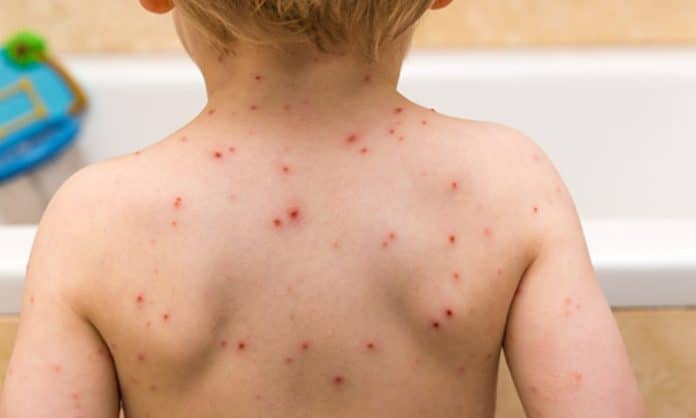Moreover, chickenpox in adults may be more severe and more dangerous to health than in children.
Therefore, its symptoms, especially the characteristic rash, should not be underestimated. We advise you when to see a doctor and how to treat smallpox in adults.
Chickenpox in adults may be more severe and more dangerous to health than in children.
Moreover, chickenpox in adults may be more severe and more dangerous to health than in children. Therefore, its symptoms, especially the characteristic rash, should not be underestimated. We advise you when to see a doctor and how to treat smallpox in adults.
One thing should be clearly stated – although chickenpox is a curable disease, it is quite dangerous for some groups of people.
Therefore, we should not ignore any of its first symptoms. Fortunately, for infection to occur, a number of conditions must accumulate, which, contrary to appearances, are not that easy to achieve.
Chickenpox infection in adults
For us as adults to be at all likely to become infected with the chickenpox virus, some conditions must be met.
We must be in the group of people who avoided infection in childhood, and secondly, we must have quite long contact with the sick person.

Chickenpox scars.
As with chickenpox in children, adults who have chickenpox get red blisters that burst and then crust over leaving behind depressed, thickened scars.
This is because if we had chickenpox as children, we have gained immunity and our body knows how to fight the virus, so we do not get sick.
When we come to contact with a sick person, there are several ways of possible infection. First of all, and obvious, through droplets and direct contact.
We should absolutely avoid it if we are in the risk group. Secondly, the droplet-air route – viruses contained in the respiratory secretions of a sick person can travel with the wind, hence the name of the disease, at a distance of up to several dozen metres.
It is worth knowing that a sick person is contagious two days before the rash appears, and the period from infection to the first symptoms is from 10 to 21 days. On average, 90% of adults at risk are infected with smallpox. Infection may also occur through contact with the secretions from the vesicles of a sick person.
Symptoms of chickenpox in adults
Symptoms of smallpox in adults are similar to those in children, but the disease is often much more severe and is much more dangerous to health.
The period of so-called prodromal symptoms, which should immediately trigger a reaction in the form of a visit to a doctor, lasts up to two days.
First symptoms of smallpox include lack of appetite, nausea, tiredness, headache, general malaise, and sometimes fever up to 40 degrees.
The next symptoms are the already familiar rash, initially in the form of spots that gradually progress to blisters, and the entire process lasts about six days.
The spots usually appear in two to three flushes, and their total number at their peak can reach 500, which means that there will be no place on the trunk without a rash where a hand could fit.
The blisters gradually dry out and fall off, and it may take up to three weeks to get rid of them completely. The rash is accompanied by itching, fever and significant weakness that lasts for several days.
Possible complications after smallpox in adults
The most common complications after smallpox, affecting every 10th patient, is pneumonia. It is also possible, although much less common to get acute cerebellar ataxia, meningitis, and encephalitis.
The rarest complications of chickenpox include arthritis, glomerulonephritis, inflammation of the heart muscle, pancreas and liver. Chickenpox is the most dangerous for pregnant women, as the infection may even result in miscarriage.
People with reduced immunity, skin problems or chronic heart and lung diseases are also at high risk of complications.
Treatment of chickenpox
The most common form of reactivated chickenpox is shingles. However, the most effective method is to prevent infection by self-isolation and preventing contact with the sick person and vaccination .
Vaccines are available for both children and adults in two doses. If you have had chickenpox and are over 60 years old, you can undergo a one-time vaccination to reduce the risk of shingles.













